Heat stroke admissions during heat waves in 1,916 US counties for the period from 1999 to 2010 and their effect modifiers
- PMID: 27503399
- PMCID: PMC4977899
- DOI: 10.1186/s12940-016-0167-3
Heat stroke admissions during heat waves in 1,916 US counties for the period from 1999 to 2010 and their effect modifiers
Abstract
Background: Heat stroke is a serious heat-related illness, especially among older adults. However, little is known regarding the spatiotemporal variation of heat stroke admissions during heat waves and what factors modify the adverse effects.
Methods: We conducted a large-scale national study among 23.5 million Medicare fee-for-service beneficiaries per year residing in 1,916 US counties during 1999-2010. Heat wave days, defined as a period of at least two consecutive days with temperatures exceeding the 97th percentile of that county's temperatures, were matched to non-heat wave days by county and week. We fitted random-effects Poisson regression models to estimate the relative risk (RR) of heat stroke admissions on a heat wave day as compared to a matched non-heat wave day. A variety of effect modifiers were tested including individual-level covariates, community-level covariates, meteorological conditions, and the intensity and duration of the heat wave event.
Results: The RR declined substantially from 71.0 (21.3-236.2) in 1999 to 3.5 (1.9-6.5) in 2010, and was highest in the northeast and lowest in the west north central regions of the US. We found a lower RR among counties with higher central air conditioning (AC) prevalence. More severe and longer-lasting heat waves had higher RRs.
Conclusions: Heat stroke hospitalizations associated with heat waves declined dramatically over time, indicating increased resilience to extreme heat among older adults. Considerable risks, however, still remain through 2010, which could be addressed through public health interventions at a regional scale to further increase central AC and monitoring heat waves.
Keywords: Effect modification; Heat stroke; Heat wave; Medicare beneficiaries; Spatiotemporal variation.
Figures
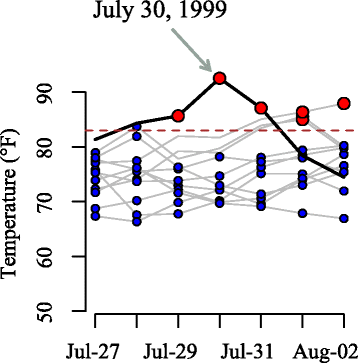
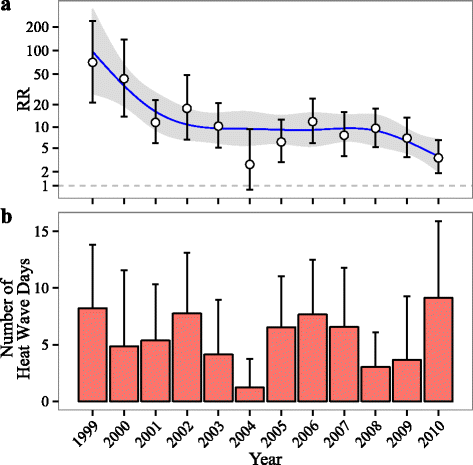
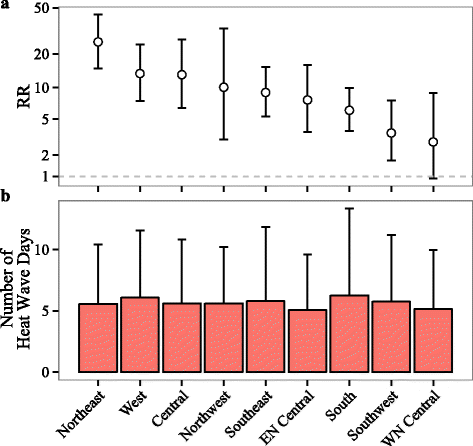
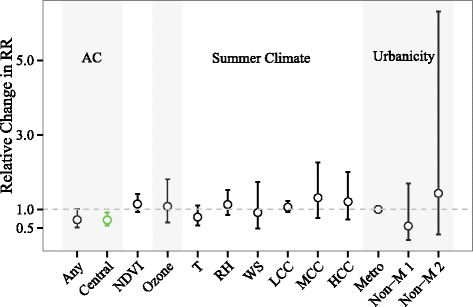
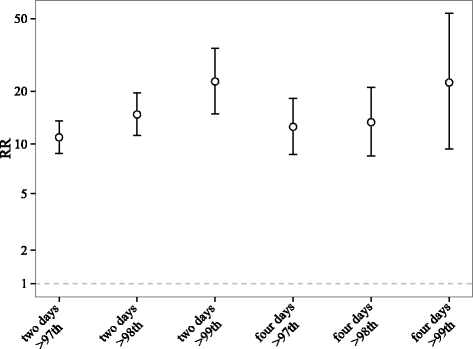
References
Publication types
MeSH terms
Grants and funding
LinkOut - more resources
Full Text Sources
Other Literature Sources
Molecular Biology Databases

